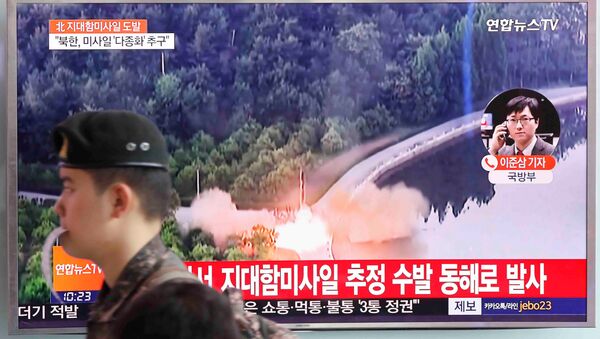According to Pyongyang’s propaganda arm, the Korean Central News Agency (KCNA), the new explosive is a "cruise rocket"capable of "striking any enemy group of battleships."
North Korea’s military just completed testing on what it claims is a precision-guided munition (PGM). The PGM designation is generally reserved for warheads guided by a GPS target or lasers.
On June 8, North Korea launched four missiles from Wonsan, a port city on the east coast of the Korean Peninsula, into the Sea of Japan. According to Pyongyang, the launch was a test of this new ship-killing missile. The North said its test was a success. The surface-to-sea munition hit static targets in the ocean after making “circular flights,” KCNA quoted North Korean leader Kim Jong-un as saying.
North Korea’s claim of victory has not be independently verified.
On Tuesday, Sputnik reported the withdrawal of US aircraft carriers from the Sea of Japan – in North Korea’s front yard. The USS Ronald Reagan and USS Carl Vinson had been monitoring any possible military action from the North while showing Pyongyang the extent of the US Navy’s reach and might.
"We assess that North Korea intended to show off its various missile capabilities, display its precise targeting capability, in the form of armed protests against ships in regard to US Navy carrier strike groups and joint naval drills," a South Korean military spokesman explained.
As of June 9, North Korea has fired 16 missiles over 10 testing events.
The most recently fired projectiles have a range of about 125 miles (200 kilometers), the Washington Times reported. As a reference point, these “short-range” missiles wouldn’t be able to strike the Japanese mainland, which is roughly 649 miles (1,045 kilometers) across the sea. They could, however, have applications in the event of a naval invasion from Japanese, South Korean, US or Chinese warships.




